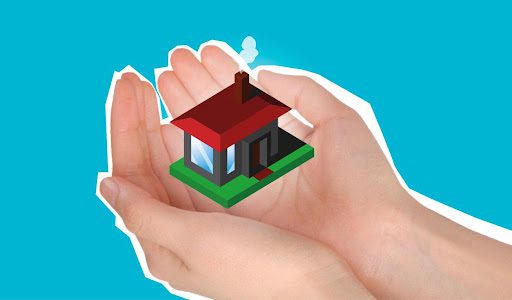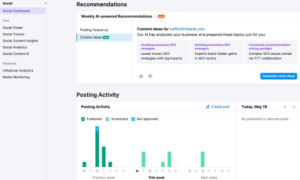If you’re in the market for a refinancing loan, you’re probably wondering what qualifications and costs to expect. Keep reading to learn about qualifications, costs, and tax deductions. It’s important to understand the options available to you when refinancing your mortgage.
Refinancing
Refinancing your home can save you money in the long run. It can be used for a big purchase, investments, or even a vacation abroad. Refinancing also helps you consolidate your debts. By pooling all your high interest debts into one single loan, you can lower your monthly payments.
When you refinance your home loan, you get a new one with a lower interest rate. This can save you thousands of dollars over the life of the loan. You can also choose a cash-out refinance, that allows you to use your home’s equity to pay off your loan.
Refinancing your home loan is a simple process. You just need to make sure you know the benefits of refinancing before you make a decision. Refinancing your loan allows you to benefit from a lower interest rate or a better offer. It can also help you finance a vacation or repair your home.
There are some lenders who require you to pay a sum upfront, which can be a percentage of the amount of the old loan. Others use a points system where the amount you pay upfront will determine your new interest rate. If you don’t have enough money to make up for the upfront costs, refinancing may not be worth it.
Refinancing is an important financial decision, so do not rush it without doing your homework and comparing interest rates, fees, and loan features. Ensure that the new loan offers you better features and service. If it does not, you may be better off sticking with your current lender. In that case, you can always ask them for a better deal.
Costs
If you are considering refinancing your home, the first thing you should do is get an estimate of how much it will cost. Then, compare the new loan’s monthly payment to your current one, to get a rough idea of how much you’ll save. Then, you can divide the new payment by the old one to determine the payback time. You’ll also need to consider the tax implications of refinancing.
The costs of refinancing a home include an appraisal fee, which can be as much as $300. Click here for more information. You’ll also pay an origination fee, which is generally 1% of the value of the loan. In a $200,000 loan, that fee will be around $2,000. Other fees include a flood certification fee, which can be anywhere from $50 to $150. You’ll also need to pay for a title search, which can cost anywhere from $400 to $800.
The costs of refinancing can vary depending on your location and the lender you use. Be sure to shop around for the best deal, and you can save hundreds of dollars every month. You can also check if you can qualify for a no-cost refinance, though that could come with higher interest rates and rolled-in closing costs, making it more expensive in the long run.
Closing costs are one of the most important considerations when refinancing your home. Although closing costs can vary, they generally amount to 3% to 6% of the value of your home. The lender should disclose all closing costs so that you know exactly how much you’ll spend. This can give you a better idea of whether refinancing your home is the best move for your financial situation.
Depending on your needs, refinancing can help you save on your monthly payment. Refinancing can also help you extend the term of your loan. If you’re planning to move in the near future, the funds you save from refinancing can be used to pay for the down payment on a new home.
However, it is important to note that private lenders generally require a maximum loan-to-value (LTV) ratio of 80% or more. Those with less than 20% equity in their home may also be required to pay for PMI.
While closing costs are generally around 3% to 6% of the loan amount, they can vary widely depending on how much you want to borrow. Some refinancing options will allow you to roll these costs into the loan amount, reducing upfront costs.
You should also consider getting an agreement in writing that guarantees the interest rate and discount points you receive. This will prevent your lender from raising the interest rate or charging you a higher fee if you decide to refinance your home.
Tax deductions
When you refinance your home loan, you may be able to take advantage of certain tax deductions. These are available to you if you make improvements that improve the value of your home. However, there are some restrictions. First, the amount you can deduct cannot exceed the amount of your original mortgage.
Secondly, you can deduct closing costs. These costs are deductible if they are related to mortgage interest and real estate taxes. However, closing costs that are paid to a service provider are not deductible. Points can be deductible as well, as long as they are spread over the life of the loan.
However, many new tax laws have made it more difficult for homeowners to take advantage of the benefits that refinancing offers. For example, under the new tax laws, many deductions are no longer available. For example, the Tax Cuts and Jobs Act lowered the interest deduction and eliminated the mortgage insurance premium deduction on most mortgage loans. However, Congressional action has restored the insurance deduction on mortgage loans through the 2021 tax year.
Mortgage interest is a major tax deduction for new homeowners. Since most mortgage payments go toward interest in the early years, the deduction can add up to thousands of dollars to your bottom line. In addition, mortgage points are tax deductible. This can be a good way to get the most out of your mortgage.
In addition to mortgage interest, you can also deduct the cost of closing a refinanced home loan. However, you must make sure that you disclose any closing costs. The laws of tax deductions are constantly changing. So, it is best to consult a tax professional if you have any questions.
Another tax deduction that you can take advantage of is property taxes. You can deduct as much as $10,000 in state and local taxes each year. Fortunately, the average homeowner pays less than $2,500 per year. This means that most people can take advantage of this deduction.
How to Compare Loan Rates: Variable-rate loans
Variable-rate loans provide borrowers with the flexibility to adjust to fluctuating market conditions. Because the interest rate changes periodically, they can be advantageous when rates are low, but can be costly when rates are high.
Educating yourself about variable-rate loans will help you make an informed decision on which one is right for you. It will also help you budget for changes in future interest rates.
Variable-rate loans typically start lower than fixed rates. This means that you’ll be making smaller payments at first, but interest rates will fluctuate over the entire repayment period. In addition, variable-rate loans may feature the ability to lock in a lower interest rate over time. This can result in lower monthly payments, but be sure to check the terms.
Points and credits
Credits and points are both important aspects to consider when comparing loan rates. Credits can be used to offset closing costs and are also a great way to reduce the amount you need to pay upfront. The terms of loan repayment depend on the lender, loan-to-value ratio, credit score, and debt-to-income ratio.
The amount of points that are paid to the lender at closing determines the interest rate. One point equals 1% of the loan amount. Lenders often offer incentives to reduce the number of points or credit that they charge. This can make the overall interest rate appear lower. Different lenders also offer credits that are not connected to the interest rate.
Points may be advantageous in some cases, but not for everyone. If you’re facing financial problems or are concerned about losing your job, you may not want to buy points. Buying points can also be detrimental if you have a bad credit rating or have young children. In some cases, points can be financed and rolled into the loan, but this will increase the loan balance immediately and increase your break-even point time.
Annual percentage rate
When comparing loan rates, the annual percentage rate is an important number to look for. This rate reflects the actual cost of borrowing a loan, including interest, required fees, and any points charged by the lender. It is an important factor in any loan, including one for refinansiering av kredittkort because it determines how much you will pay over the life of a loan. It is a better measure of the value of a loan than the interest rate alone.
This number helps consumers compare different loan rates and choose the best one. It is based on the interest rate paid annually as a percentage of the principal loan amount. It can be found on periodic statements and borrower agreements. When comparing loan rates, it is also helpful to compare APRs between different lenders.































